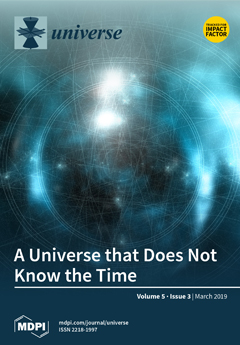Assuming the Multiple Point Principle (MPP) as a new law of Nature, we considered the existence of the two degenerate vacua of the Universe: (a) the first Electroweak (EW) vacuum at
GeV—“true vacuum”, and (b) the second Planck scale
[...] Read more.
Assuming the Multiple Point Principle (MPP) as a new law of Nature, we considered the existence of the two degenerate vacua of the Universe: (a) the first Electroweak (EW) vacuum at
GeV—“true vacuum”, and (b) the second Planck scale “false vacuum” at
GeV. In these vacua, we investigated different topological defects. The main aim of the paper is an investigation of the black-hole-hedgehogs configurations as defects of the false vacuum. In the framework of the
gravity, described by the Gravi-Weak unification model, we considered a black-hole solution, which corresponds to a “hedgehog”—global monopole, that has been “swallowed” by the black-hole with mass core
GeV and radius
GeV
. Considering the results of the hedgehog lattice theory in the framework of the
Yang-Mills gauge-invariant theory with hedgehogs in the Wilson loops, we have used the critical value of temperature for the hedgehogs’ confinement phase (
GeV). This result gave us the possibility to conclude that the SM shows a new physics (with contributions of the
-triplet Higgs bosons) at the scale ∼10 TeV. This theory predicts the stability of the EW-vacuum and the accuracy of the MPP.
Full article





